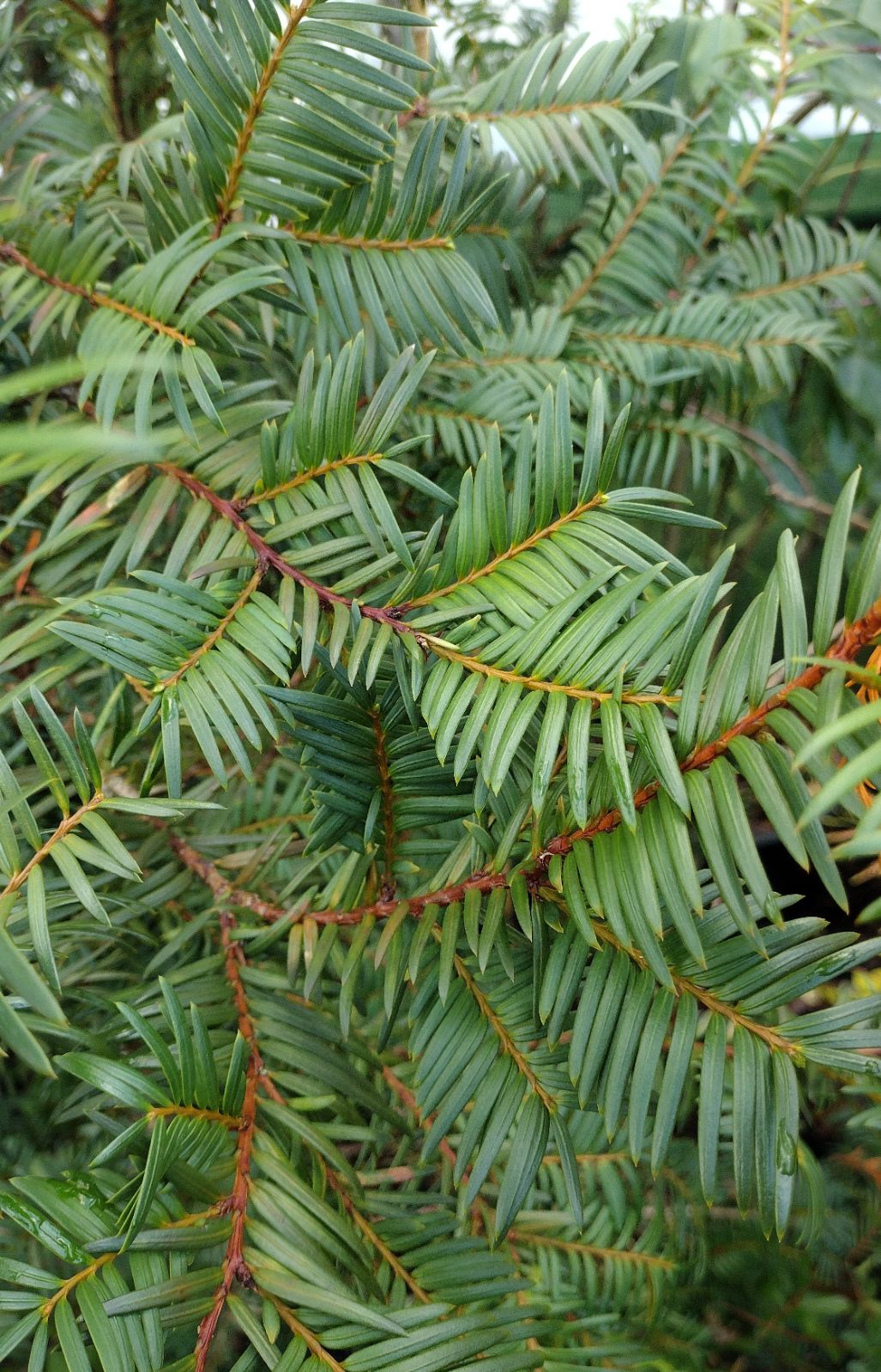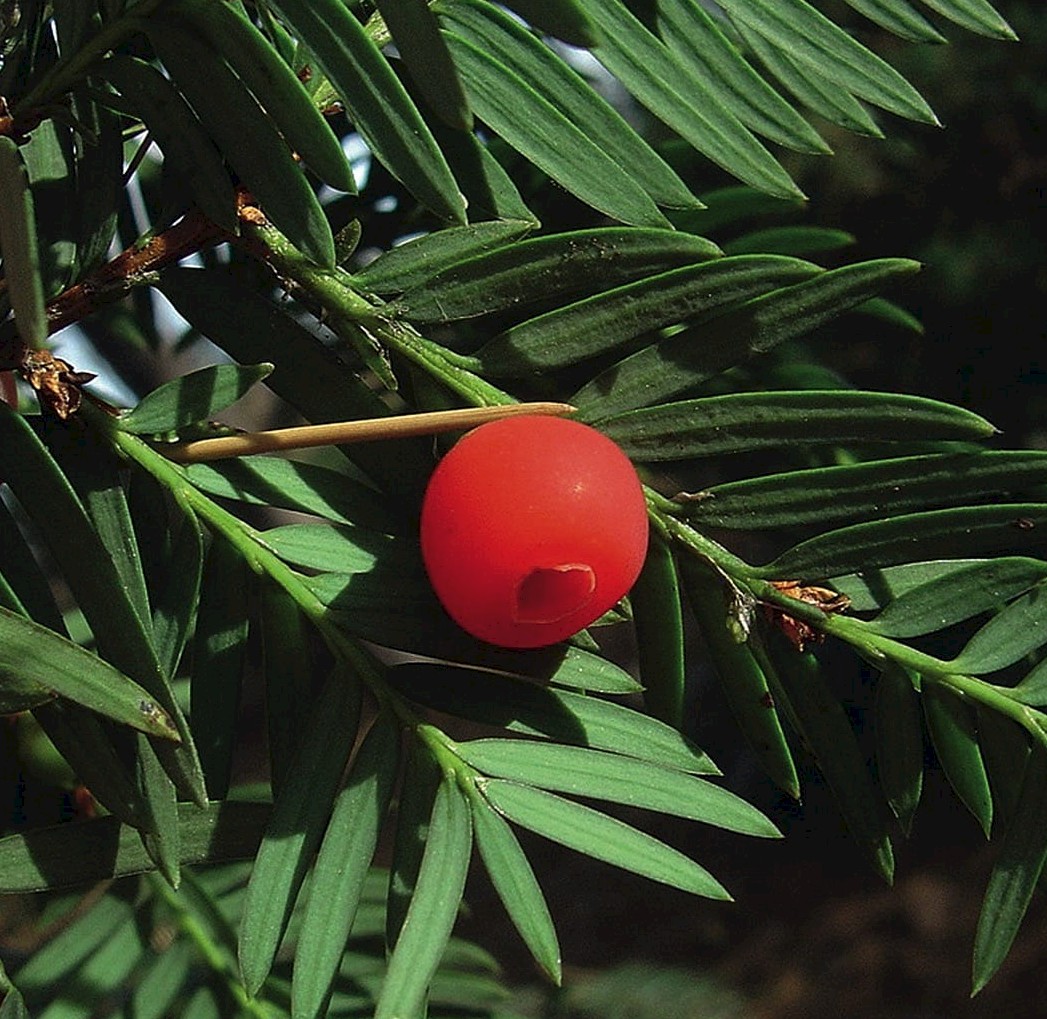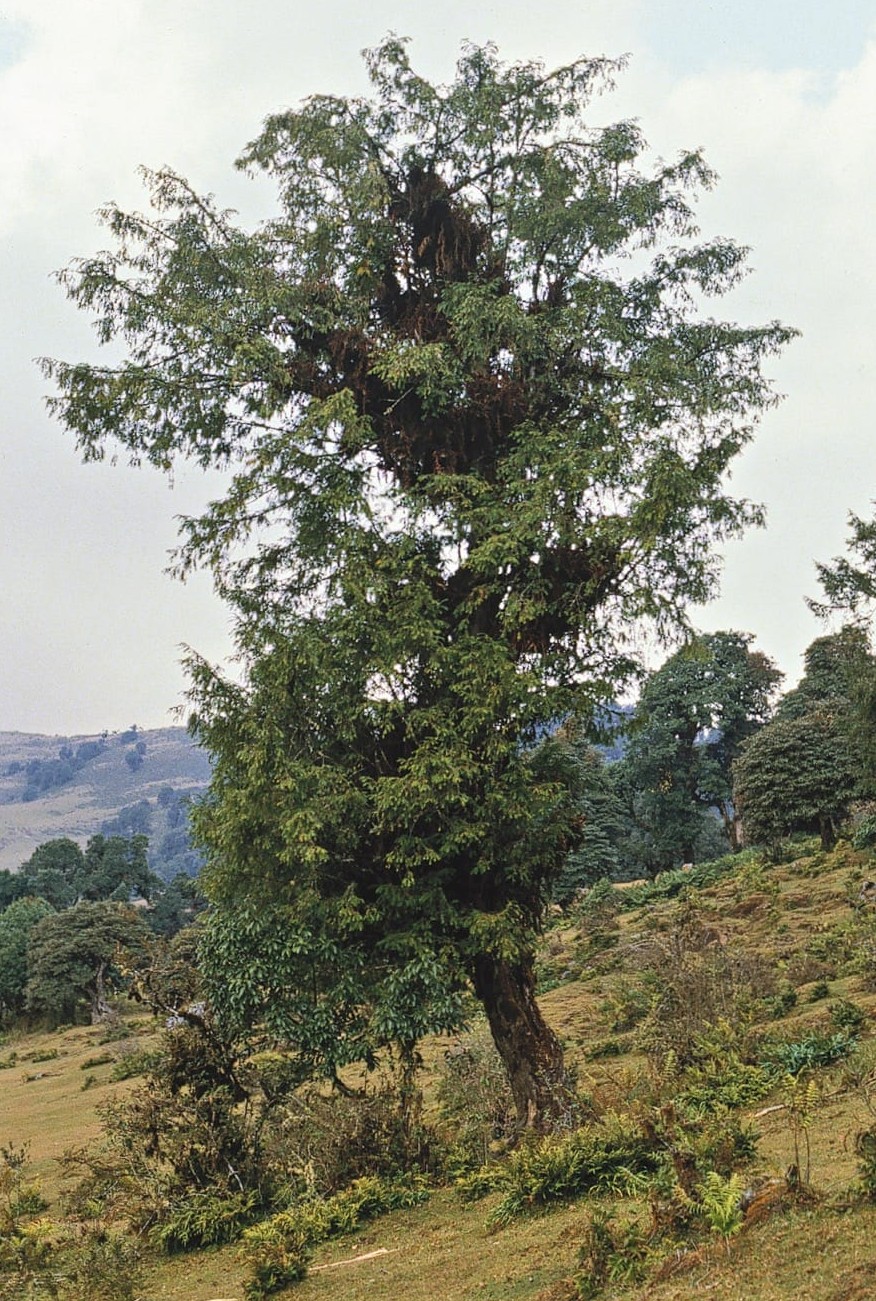Taxus wallichiana
Sponsor
Kindly sponsored by
This genus has been sponsored and new text is being prepared.
Credits
Article from Bean's Trees and Shrubs Hardy in the British Isles
Article from New Trees by John Grimshaw & Ross Bayton
Recommended citation
'Taxus wallichiana' from the website Trees and Shrubs Online (treesandshrubsonline.
Genus
T. baccata has its eastern limit in N. Iran. From Afghanistan eastwards through the Himalaya and N.E. India to S.W. China it is replaced partly by T. wallichiana, which may not be in cultivation. This differs from T. baccata in its usually sickle-shaped, relatively narrower and longer leaves, recurved at the margin, tapered to a usually spiny point, minutely papillose over the whole surface beneath (Florin, Act. Hort. Berg., Vol. 14 (1948), p. 382).
From New Trees
Taxus wallichiana Zucc.
Sino-Himalayan Yew
Synonyms: T. baccata subsp. wallichiana (Zucc.) Pilg.,T. chinensis var. yunnanensis (W.C. Cheng & L.K. Fu) L.K. Fu,T. yunnanensis W.C. Cheng & L.K. Fu
The comparatively simple geographical distinction between Taxus fuana and T. wallichiana in the main Himalayan chain has been dealt with above, but it is within the T. wallichiana complex that things become really complicated. Perhaps due to the persistent effects of glacial refugia and rather limited genetic exchange between populations, yews ascribable to T. wallichiana growing east of central Nepal tend to form rather distinct populations, at least when their DNA is considered (Gao et al. 2007); morphologically, they remain very difficult to distinguish.
Within T. wallichiana, Fu et al. (1999d) recognised three varieties – vars. wallichiana, chinensis and mairei – even though the characters used to separate them were as woolly as usual. Their validity has been more or less confirmed by recent studies investigating their morphology (using 27 separate characters), DNA and biogeography, but still it is difficult to pin down morphological characters that can reliably separate the taxa (Gao et al. 2007, Möller et al. 2007). In addition, yews from the Hengduan mountains of Yunnan show characters that do not fit any of the three recognised varieties, and the position of isolated populations needs further consideration. Full details of the investigations, and the complete range of morphological measurements used, are provided by Gao et al. (2007) and Möller et al. (2007).
var. chinensis (Pilg.) Florin
Synonyms
T. cuspidata var. chinensis (Pilg.) C.K. Schneid.
T. chinensis (Pilg.) Rehder var. chinensis
Distribution CHINA: Chongqing, Hubei, Shaanxi, Sichuan; VIETNAM. Habitat Forest and bamboo groves, between 1100 and 2700 m asl. USDA Hardiness Zone 7 (?). Conservation status Lower Risk (IUCN); but included on CITES Appendix 2.
Var. chinensis can be categorised as having densely placed leaves (mean 12.1 per 2 cm), with a mean length to width ratio of 6.4 (i.e. longish, wide leaves) and a high number of stomatal bands (mean 12.0). It is principally found in the mountains surrounding the Sichuan Basin in west-central China, but trees with chinensis characters also occur in northern Vietnam (Möller et al. 2007).
Plants named T. chinensis are recommended by Yucca Do Nursery, Hempstead, Texas (Yucca Do online catalogue 2008), as rapidly growing, heat-tolerant yews.
var. mairei (Lemée & H. Lév.) L.K. Fu & Nan Li
Synonyms
T. speciosa Florin
T. chinensis var. mairei (Lemée & H. Lév.) W.C. Cheng & L.K. Fu
Distribution CHINA: southern Anhui, Fujian, southern Gansu, northern Guangdong, northern Guangxi, Guizhou, western Henan, western Hubei, Hunan, Jiangxi, southern Shaanxi, Sichuan, eastern Yunnan, Zhejiang; VIETNAM. Habitat Coniferous and mixed forest, between 100 and 3500 m asl, though usually lower than var. chinensis. USDA Hardiness Zone 7 (?). Conservation status Not evaluated (IUCN), but as for var. chinensis. Cross-references B570, K294.
Var. mairei has comparatively widely spaced leaves (mean 9.4 per 2 cm), with a mean length to width ratio of 8 (i.e. long and wide leaves) and a high number of stomatal bands (mean 12.7). It has a wide range in central and southern China, meeting var. chinensis along the western and southern edges of the Sichuan Basin and in northern Vietnam (Möller et al. 2007).
The epithet mairei is attached to plants grown quite widely throughout our area. Specimens seen in the United States are attractive and were flourishing, both at Heronswood and at the JC Raulston Arboretum. It is probable that many specimens grown as T. celebica (see Bean: B569), T. sumatrana and T. wallichiana belong here.
var. wallichiana
Distribution CHINA: Sichuan, Yunnan, Xizang; INDIA: Arunachal Pradesh, Assam, Manipur, Sikkim; MYANMAR ; NEPAL; VIETNAM. Habitat Broadleaved and mixed forest, often in association with bamboos, between 2000 and 3500 m asl. USDA Hardiness Zone 7. Conservation status Data Deficient (IUCN); but included on CITES Appendix 2. Illustration NT838, NT843. Cross-references B570, K294.
Var. wallichiana occurs from central Nepal to western China as a geographically disjunct metapopulation. Outliers fitting the morphological template of var. wallichiana grow with var. mairei in southern and eastern China and southern Vietnam, but these may reflect variation in the population of the latter. As defined by Möller et al. (2007), var. wallichiana has a mean leaf density of 10 per 2 cm, mean leaf length to width ratio 10.4 (i.e. longish leaves of medium width), and a high number of stomatal bands (mean 13.2).
The definable distribution of var. wallichiana makes it possible for some collections, at least, to be confidently ascribed here. Schilling 2056, for example, grown in several British arboreta, came from mixed forest in the Dudh Kosi valley of eastern Nepal in 1975 (T. Schilling, pers. comm. 2004), east of the distribution of T. fuana; Philippe de Spoelberch’s collection from the Dochu La, Bhutan in 1985 fits here as well. Gatherings from southwestern Sichuan and western Yunnan can also be reliably identified as var. wallichiana.



